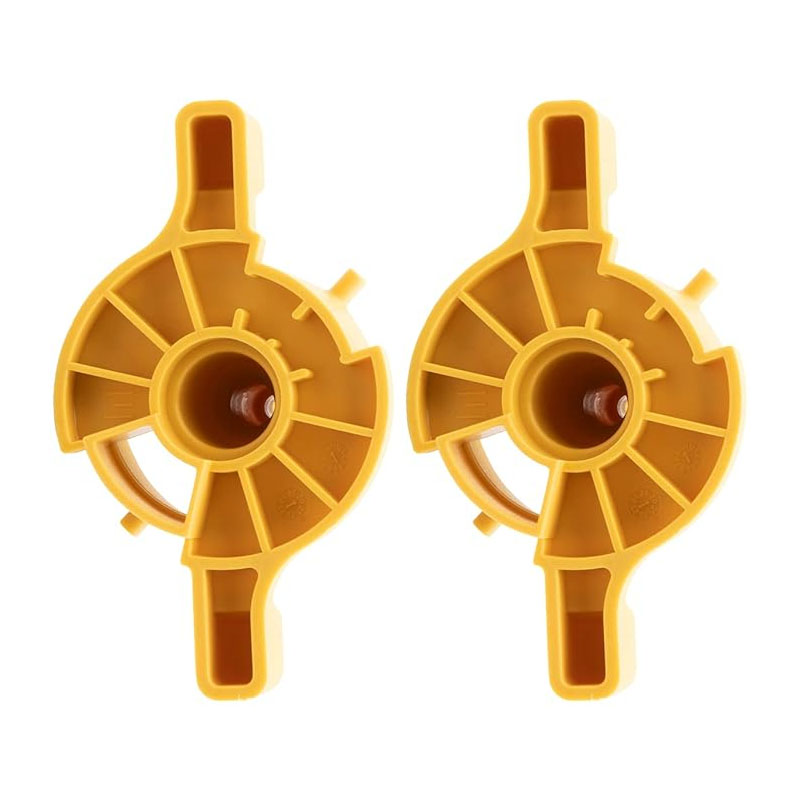Understanding Oil O-Ring Seals and Their Importance in Mechanical Applications
Understanding Oil O-Ring Seals Essential Components in Modern Machinery
Oil O-ring seals play a critical role in various industries, serving as vital components in machinery and equipment that require fluid containment. These seals are designed to prevent leakage of oils and other fluids, thereby ensuring the efficient operation and longevity of mechanical systems. In this article, we will explore the significance, design, and applications of oil O-ring seals.
What are Oil O-Ring Seals?
An O-ring is a circular elastomeric seal used in various mechanical assemblies. Its shape—similar to the letter O—allows it to fit snugly in a groove, creating a barrier against fluids. Oil O-ring seals are specifically formulated to withstand exposure to lubricants, oils, and greases in high-pressure and high-temperature environments. The material composition of these O-rings is crucial, with options ranging from nitrile rubber (Buna-N) to fluorocarbon (Viton), each offering unique properties and resistance to chemicals.
Importance of Oil O-Ring Seals
The primary function of oil O-ring seals is to prevent leaks in machinery. Even minor leaks can lead to reduced efficiency, increased wear on mechanical parts, and ultimately, expensive downtime in manufacturing operations. By ensuring a proper seal, these O-rings help maintain the proper levels of lubricants within machinery, which is vital for reducing friction and preventing premature failure of components.
Furthermore, oil O-ring seals contribute to safety in various applications, such as automotive or aerospace engineering. Any leakage in these industries can have serious consequences, not only for equipment but also for human safety. Therefore, the reliability of O-ring seals is paramount.
oil o ring seals

Design Considerations
When selecting oil O-ring seals, several design aspects must be considered. The diameter, thickness, and cross-sectional shape of the O-ring are crucial for achieving an effective seal. Additionally, the material must be chosen based on the specific operating conditions—including the type of fluid, temperature range, and pressure levels. Engineers often conduct sealing simulations and tests to ensure that the chosen O-ring will perform adequately under real-world conditions.
Applications
Oil O-ring seals are utilized across a broad spectrum of industries. In automotive applications, they are found in engines, transmissions, and hydraulic systems. In the aerospace sector, oil O-ring seals are used in fuel systems and engine components, ensuring optimal performance and safety. Moreover, they are essential in agricultural machinery, industrial equipment, and even in household appliances, where fluid containment is necessary.
Conclusion
In summary, oil O-ring seals are indispensable components that enhance the functionality and reliability of various mechanical systems. Their ability to prevent leaks not only improves efficiency but also contributes to safety in numerous applications. Understanding the importance of these seals, along with their design and material considerations, is essential for engineers and manufacturers aiming to ensure optimal performance in their machinery. The future promises advancements in materials and design, further enhancing the capabilities of oil O-ring seals in modern technology.
-
Understanding Automotive Oil Seals: Essential Components for Engine and Shaft Protection
News Jul.30,2025
-
The Importance of Heavy Duty Seals in Industrial and Residential Applications
News Jul.30,2025
-
Exploring Industrial Oil Seals: From Felt Oil Seals to TTO and CFW Solutions
News Jul.30,2025
-
Essential Guide to Oil Seals: From Radial to Metal-Cased Seals for Industrial Reliability
News Jul.30,2025
-
Choosing the Right Oil Seals and Gaskets for Industrial and Automotive Applications
News Jul.30,2025
-
Cassette Seals: Durable Sealing Solutions for Harsh Environments
News Jul.30,2025
-
Understanding the Front Main Engine Seal: Purpose, Maintenance, and Installation
News Jul.29,2025
Products categories















